TRACING THE PATH PODCAST
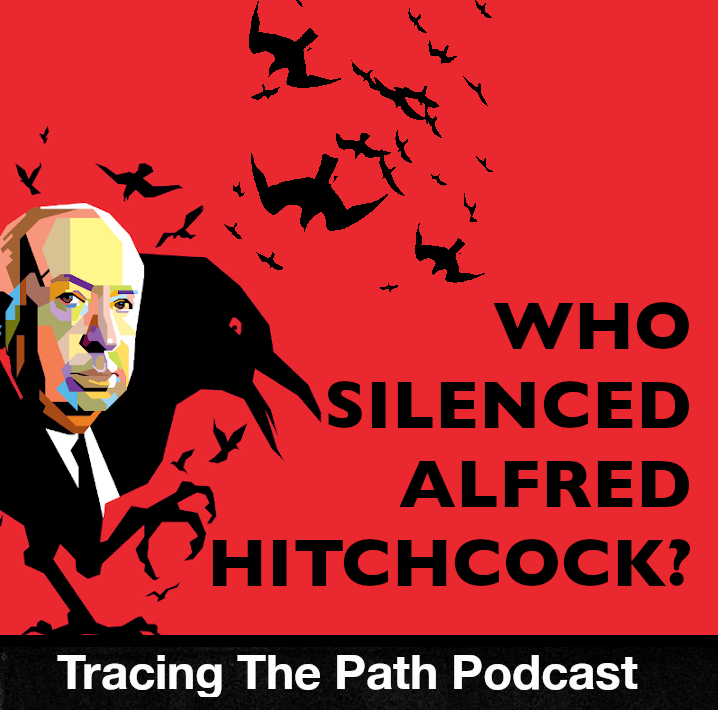
Who Silenced Alfred Hitchcock?
This episode provides a comprehensive overview of the life and enduring influence of Alfred Hitchcock, a legendary figure in cinema often called the “Master of Suspense.” It traces his early life and burgeoning interest in film, detailing how his experiences, like working with silent films and his fascination with Edgar Allan Poe’s exploration of fear, shaped his unique visual storytelling style.
The story highlights his pivotal move to Hollywood and significant films such as Rebecca and Psycho, explaining how he revolutionized filmmaking with techniques like the “double chase,” the “McGuffin,” and the “dolly zoom.” Ultimately, the source emphasizes Hitchcock’s lasting legacy as an “auteur” director whose innovative methods continue to influence modern cinema and define the horror genre.
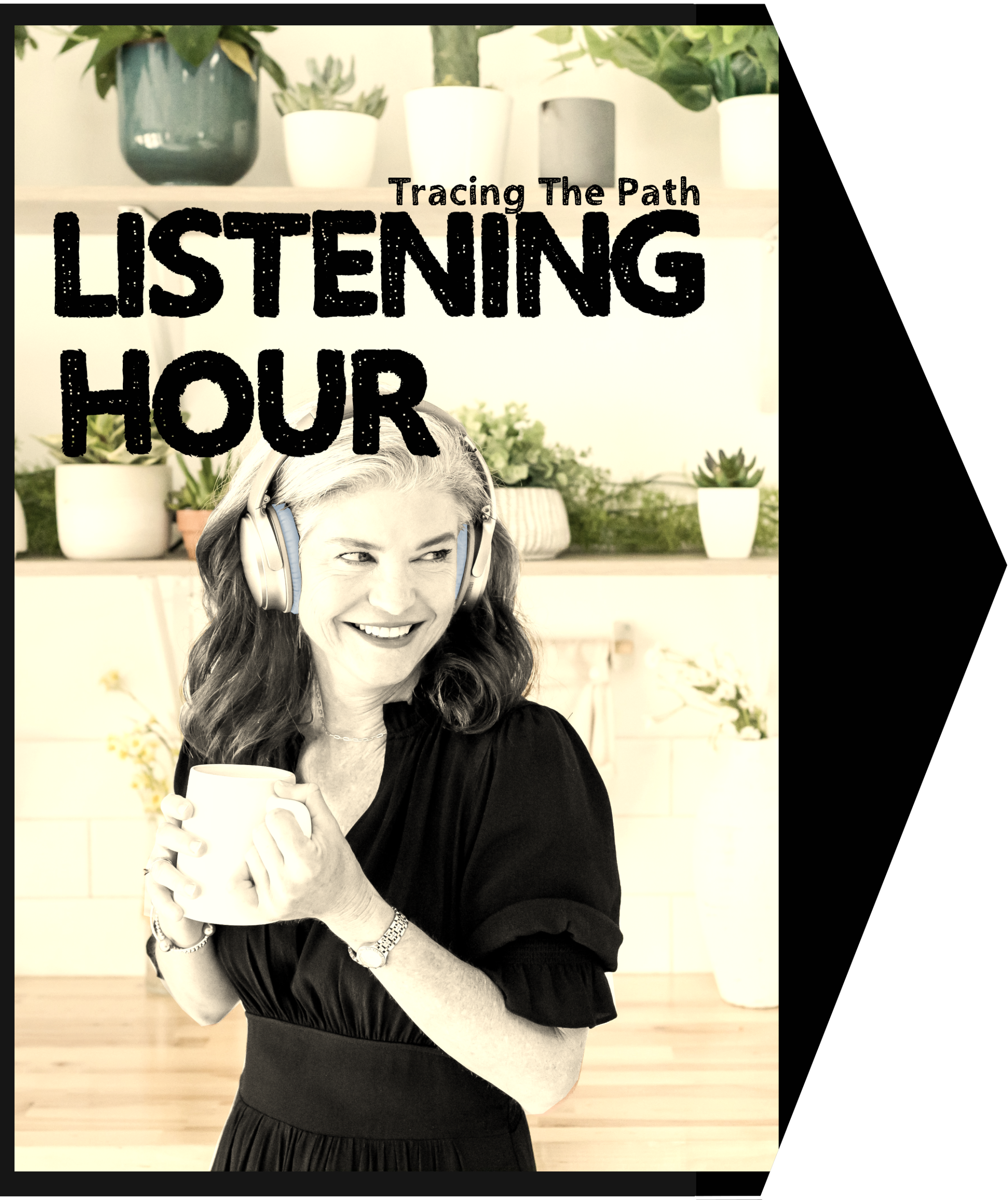
Audio Hour:
If you run an activity group, classroom or “audio book club”, click here for more information on using Tracing The Path.
Throughout the episodes, every tune is somehow related to the topic. In the Twinkies episode, for instance, the discussion of the Brooklyn Tip-Tops Baseball team concludes with “Take Me Out To the Ballgame”.
How many do you recognize? And harder, how many can you name?
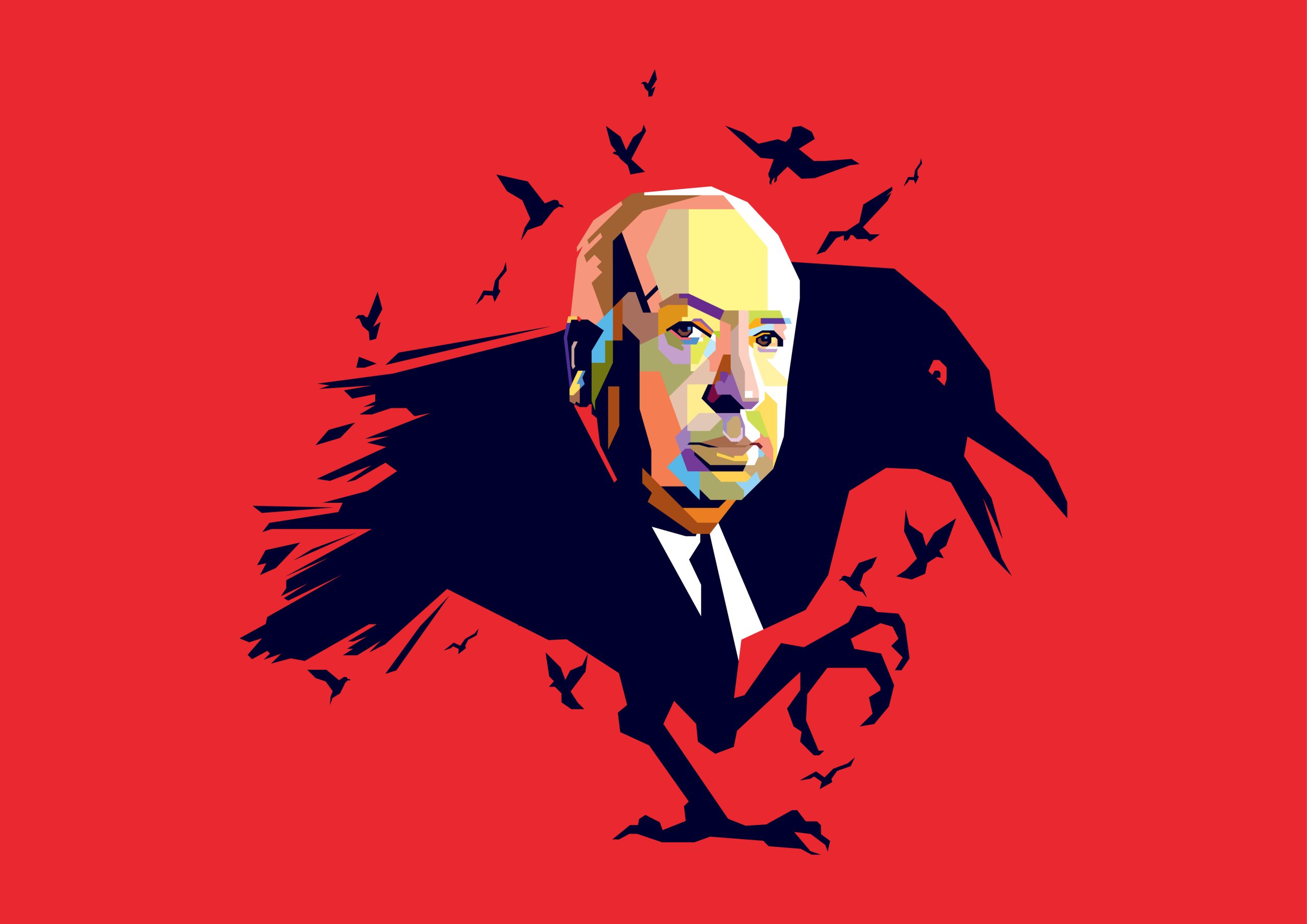
The Early Days of Hitchcock
In 1997, Apple Computers was on the brink of bankruptcy. When the art director at their advertising agency suggested a new tagline and a video campaign that would showcase people from history who changed the world by thinking differently, many of which have been the subject of the past 45 episodes.
The campaign included one man who paved the way in the evolution of cinema.
Alfred Hitchcock was born in 1899 in the Leytonstone outside of London. His father was an entrepreneur who’d owned several businesses depending on the year. When Alfred was little his father owned a grocery store that delivered groceries by foot, by pony, and eventually by tram to his customers.
Alfred was often put to work, and by an early age had traveled every road of the burrow. And when the tram system had developed, he knew every stop, and even the tram schedules.
He also loved reading, writing and photography, but his favorite thing was going to the movies.
It was a story he read when he was 16 that began to shape his future. Before even reading his poetry, Alfred read Edgar Allen Poe’s biography. And then, after delving into his poems, he was struck by how sad Poe had been his entire life, despite such meteoric talent. It made him want to find his life’s work and something that brought him joy.
Movies were what he truly loved. So much so, instead of buying comics and gum, he often bought movie trade magazines and made sure to see new films on opening night, if not sooner.
D.W. Griffith’s “Thou Shall Not Kill”, and Cecil B. Demiles, “Forbidden Fruit”, remained in his memory for decades. He was also a prolific reader, having read HG Wells’s “War of the Worlds”, Joseph Conrad’s “A Secret Agent” and Joseph Buchanan’s “39 Steps.”
Sadly when he was 15 years old in December of 1914, his father passed away.
With his older siblings gone, he found work to help support him and his mother. As a man of many trades and skills and having gone to engineering school in London, Alfred got a job at W.T. Henley, a telegraph cable manufacturer. Being in high demand during World War I, he cut his teeth as a laborer and electrician during the day and took classes at night.
When he turned 18, he tried to enlist in the military, but his weight prevented him from seeing any combat, and instead stayed in London. After the war and back at W.T. Henleys, he started an in-house magazine and was promoted to the advertising department, where he got to flex some of his creative muscles.
With movies on his mind still, however, he didn’t stop looking for a way to jump into film.
When he found out that Paramount Pictures was opening an office in London to film a movie, he sprang into action. Movies were still silent and thus title cards were put in the screen to tell the audience some of the plot points.
Alfred drew up some title cards and took them to the Paramount office. He was hired on the spot, which brings us to a title card of our own.
In every success story, you can find the moments of luck, the times when our hero was in the right place at the right time. But if you dig deeper, you will find the truth behind luck.
It is not lucky Paramount opened an office in London. In fact, it is the opposite. It takes diligence and persistence to be aware that Paramount was opening an office in London, and it takes creativity, courage and pro-activeness to make title cards and deliver them.
As Steve Jobs said, “Think different.”
Nevertheless, Alfred did find himself in a fortunate situation when he started working at Paramount. While Paramount’s American employees had strict job titles and roles. The English hires were encouraged to try their hand at anything. Thus Hitchcock gained experience as co-writer, director, sometimes production manager, on over 18 short films.
During this time, two outside influences would further shape who he’d become.
In 1920 he attended a play titled “Mary Rose,” written by the very famous author of Peter Pan, J.M. Barrie. Hitchcock fell in love with the story, but more importantly, he fell in love with how Barrie and his musical director, Norman O’Neill, had made the music a character in story.
Instead of the typical musical intro, outro and interludes, music helped mark when things happened in the story.
Another moment that shaped him was the reading of Edgar Allen Poe’s, “Tales of the Grotesque and Arabesque”. Years later he recalled the feeling it gave him. He said”
“When I finished, I was afraid. And this fear made me discover something I’ve never forgotten. Fear, you see, is an emotion people like to feel when they are safe.”
When Paramount left their London office in 1922, Gainsborough pictures took its place, with Hitchcock hired as an assistant director. There he had opportunity to work on eight more films, but more important to his future, eight more silent films. This work on silent films is important to his future success and genius. With the silent picture, the focus and energy was on telling the story using visual cues.
In his later years, Hitchcock recalled “disappointing actors” for having too many facial expressions, reminding them that the audience only needs to see the expression that defines the moment.
At Gainsborough Pictures, Hitchcock got to direct his first few movies. The one that got him attention was based on a story from his childhood neighborhood, which takes us back to 1845 and the Irish potato famine.
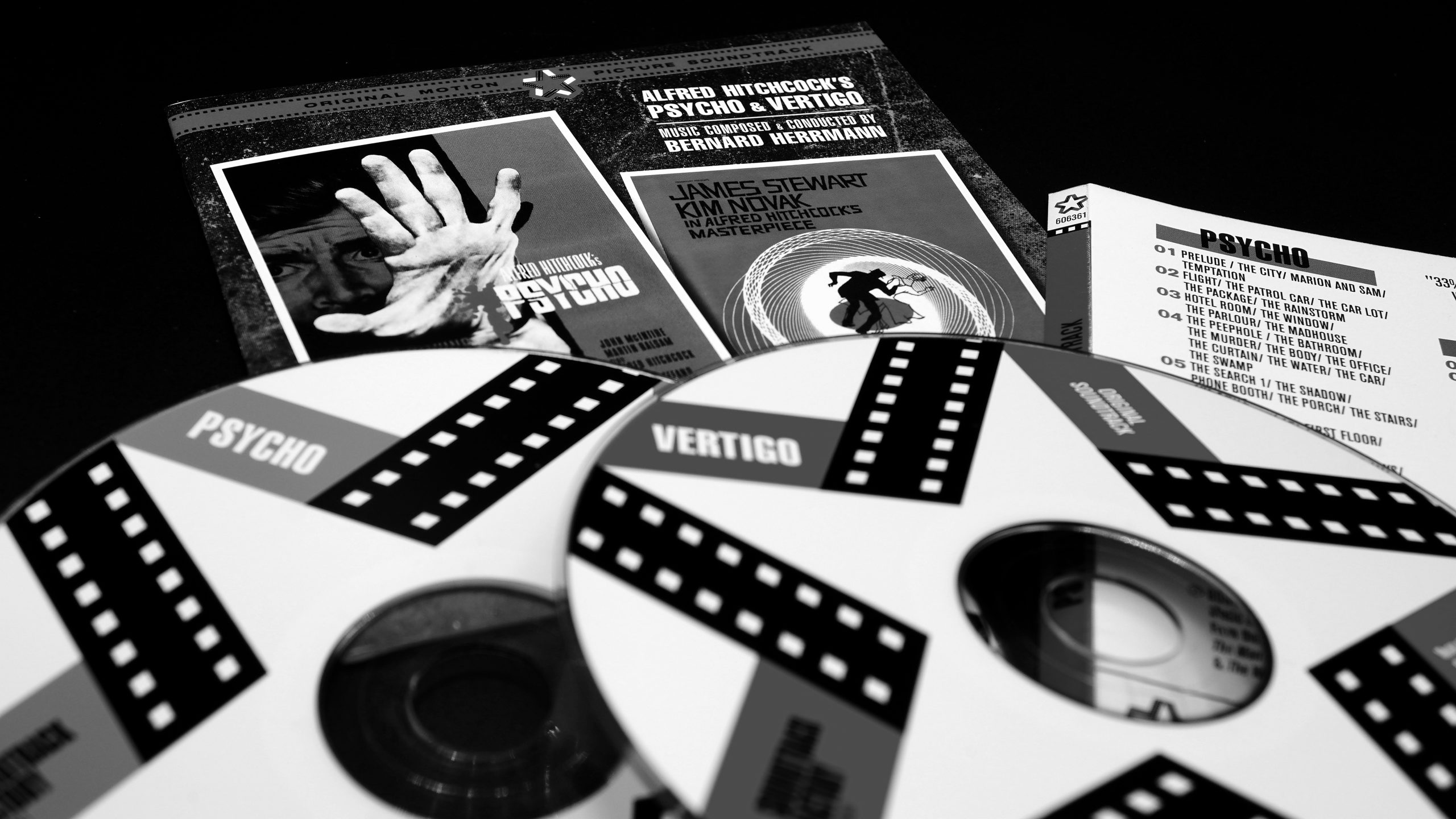
The Silent Talking Mix
Similar to the boll weevil in the American south, a plant mold destroyed potato crops in Ireland. From 1845 to 1852, causing over 1 million people to die from starvation, and forcing another million to leave their homes.
Many to places like Liverpool and the north, and Laytonstone near East London. That influx of people was coupled with a Jewish population in 1882 who were forced to flee Russia and Poland in the face of anti-Semitic riots and pogroms.
Thus in the 1880s, London was severely overpopulated, which meant work and housing conditions deteriorated, causing significant poverty. And sadly, such conditions led many women to a life of prostitution.
In 1888, in a seeming reaction to the unfortunate situation, a series of prostitutes were murdered, with the killer gaining the nickname “Jack the Ripper.” It was this story Hitchcock used as the basis of his first important movie, “The Lodger.”
The Lodger was about the hunt for Jack the Ripper. When it debuted, to Hitchcock’s surprise, it was lauded as the greatest British movie ever made. For Hitchcock, it was reflection of his love for the storytelling of Edgar Allan Poe.
In the movie, a man fitting the alleged description of the killer rented a room in a young woman’s house. She had to decide what to do, as the man could very well also have been innocent and not the killer. According to Hitchcock, like Poe’s poems, it was a perfectly unbelievable story, recounted to viewers with such a hallucinatory logic that one has the impression the same story could happen to you tomorrow.
The Lodger also started a tradition as Hitchcock himself had to stand in as an actor for an absent one, thus becoming Hitchcock’s first movie cameo.
At Gainsborough Pictures, Alfred met the love of his life Alma, working on the set as well. After The Lodger, they married and traveled throughout Europe. Upon their return, they attended a play of a playwright friend Charles Bennett.
The play called “Blackmail,” became a hit in London, and Hitchcock wanted to turn it into a movie. It would turn out to be much more than Hitchcock could have imagined.
With “The Jazz Singer” being the first talking movie in America, the studio called and wanted Hitchcock to turn his into a talking picture as well. That meant Hitchcock had to re-cut and re-shoot scenes that could contain dialogue.
But it also meant he had to finish both the silent movie and a talky to accommodate the theaters that didn’t have the technology. For Great Britain, it meant the future of movies had arrived.
But for history, this moment would be what defined Hitchcock. This moment is why Steve Jobs included Hitchcock in a think different campaign.
The most brilliant movie director of the 20th century defined his style in the silent era, where the visual component was the story, and talking was just extra.
Charles Bennett, author of “Blackmail”, had another script to show Hitchcock. He had written it with another purpose in mind, but that hadn’t worked out. The theme of an ordinary man in extraordinary circumstances was everything Hitchcock loved.
To it, Hitchcock added his influence, including changing the script, based on a cartoon he’d seen in a Punch Magazine. The result was the critically acclaimed “The Man Who Knew Too Much”. Since that worked out so well, Hitchcock arranged one of his favorite childhood books, “The 39 Steps”, into their next movie.
A few more hit movies in a row, and Hitchcock’s life would take a big turn.
His next movie “The Lady Vanishes” caught the attention of Hollywood movie producer David O. Selnick. Alfred Hitchcock was 39 years old at the time. And while his movies had achieved some acclaim in England, he still wasn’t well known. Plus, his craft of suspense movies wasn’t considered high culture.
The attention of Hollywood was an honor he’d only dreamed about. And at 39 years old, there had to have been many years where he thought it might never happen. So in 1938 he boarded the SS Queen Mary from the port of Southampton in hopes of making contacts in America.
Making movies in Hollywood was an easy process. In like all big companies, the big business of Hollywood was a pretty tight system. Choosing to make movies outside of the system largely meant you’d go without distribution. Even the movie stars themselves lived within a star system.
Unlike directors, stars were contracted with the movie houses on salary, and so doing they were expected to look and act like stars all time. Before leaving their homes they had to be well-dressed and follow morality code.
Things like acting lessons and singing lessons and any discrepancies were all kept very discreet.
Alfred had his work cut out for him, breaking into the system, and he was quite surprised to find many producers snubbed their nose at the kinds of movies he made. Only one producer was willing to offer him a contract. David O. Selznik himself.
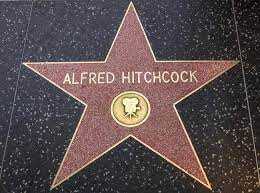
Hitchcock in Hollywood
David was a bit younger than Alfred, but he had a bit of a head start in the movie business. David had grown up in Pittsburgh, his father Louis Selznick had been a silent movie producer.
After attending Columbia University in New York, Selznick used his father’s connections to get a job at Metro GoldwynMeyer Pictures. From there he moved to Paramount and then to RKO Pictures, the company that had produced “The Jazz Singer”.
At RKO, David made a bit of a name for himself, signing Catherine Hepburn, John Barrymore, and Fred Astaire, and he backed the production of King Kong.
In 1935, he started his own production company and produced a string of hits, like “The Adventures of Tom Sawyer” and “Gone with the Wind”. It was then that the son of a silent movie producer sat face to face with Alfred Hitchcock, the greatest silent movie director England had ever produced, and together they would make magic.
Their first film was Rebecca in 1940, based on a book by Daphne Du Maurier. Du Maurier was somewhat of a granddaughter to Peter Pan’s J.M. Barrie. Barrie had been a good friend of George Du Maurier, Daphne’s great grandfather. But when he passed away at a young age, J.M. Barrie stepped in to take care of the family.
The movie they made after her story starred two up-and-coming actors, Lawrence Olivier and Joan Fontaine. To the chagrin of all the producers who snubbed their nose at Alfred Hitchcock, Rebecca went on to win Best Picture at the Thirteenth Academy Awards. And in Hitchcock’s words, its success also had a negative effect as it typecast Hitchcock as a guy who could only make suspense movies, which he felt was another part of the Hollywood system.
He later said, “Edgar Allen Poe and I were alike, prisoners of the suspense genre. If I were to make Cinderella, everyone would look for a corpse. And if Poe had written Sleeping Beauty, they all be looking for a murder.”
Despite his success with the Rebecca, Hitchcock had trouble getting the attention of good writers. There still wasn’t a lot of respect for his genre, so he was really surprised when Thornton Wilder agreed. Hitchcock had seen and loved his play “Our Town”,” and his book, “The Bridge on the San Louis Rey.”
He reached out to Wilder because he had a story idea, but needed a master’s storyteller to turn it into a script. He’d had dinner with David O’Selznik’s head of story department, Margaret McDonald and her husband. And her husband showed a story idea he had, and gave it to Hitchcock in the form of a nine-page synopsis.
While he normally takes a bunch of time to flesh out a story, Thornton rushed the story, which Hitchcock turned into the movie “Shadow of a Doubt” He hurried it because World War II had started and he wanted to enlist, which Thornton Wilder did immediately thereafter joining the psychological warfare department.
For Alfred Hitchcock, he was too old to join the military. And with Thornton gone, Hitchcock reached out to John Steinbeck for his next movie. He had a war-related idea about British and American survivors of a German U-boat attack huddled in a lifeboat together when they also hauled aboard a German soldier.
John Steinbeck was interested in the idea and happy to oblige and put together a novella called “The Lifeboat”.
But when Alfred Hitchcock turned it into a movie, Steinbeck didn’t like the changes Hitchcock had made in the movie making process. He was so unhappy he even asked that his name be removed from the credits. Fortunately, however, his name remained. Because at the Academy Awards, he was nominated for an Oscar for Best Screenplay for “Lifeboat”.
While the movie took place almost entirely in a Lifeboat, Hitchcock was able to keep his cameo streak alive by placing his photo in a newspaper The Sailors were reading.
True Crime
Hitchcock was called back to London in 1944 by the Ministry of Information. They wanted him to help make propaganda films for the war, and the Allied forces asked that he make a documentary about the Holocaust.
Hitchcock said he didn’t hesitate. He needed to make some contribution to the war effort. Being both overweight and over age for military service, he knew if he did nothing, he’d regret it for the rest of his life.
After the war, he returned to David O’Selznick to direct “Spellbound” with Gregory Peck and Ingrid Bergman. And if that wasn’t enough star power, he hired artists Salvador Dali to design the movie’s dream sequence.
After “Spellbound”, Hitchcock was attracted to a real-life crime story that had taken place in Chicago in 1924. It was the case of Leopold and Loeb, who were two rich kids at the University of Chicago. They had subscribed to one of the theories of German philosopher Friedrich Nietzsche, its concept of Superman.
He described Superman as transcendent individuals possessing extraordinary and unusual capabilities, whose superior intellect allowed them to rise above the laws that bind the unimportant average populace. The pair felt themselves to be Superman and began a series of small crimes like theft and even arson, but they failed to get any attention, so they decided they would kidnap and kill 14-year-old Bobby Franks and try to execute the perfect crime.
But they were caught.
Loebs’ rich parents hired the most famous attorney in America, Clarence Darrow, to make sure they averted the death penalty. The story was made into a play by English author, Pager Camelton, and then adapted into a screenplay by Hume Cronin, titled “Rope.”
For Hitchcock, it was his first film with Jimmy Stewart, to which he’d make several, including Rear Window in 1954, which many to be considered, Hitchcock’s finest. While Hitchcock was becoming a household name, more so than other directors, his notoriety would take a giant leap in 1955 when he made the jump to television, creating Alfred Hitchcock Presents, a weekly 25 minute mystery airing on CBS.
Its opening sequence became iconic, beginning with Hitchcock’s self-drawn silhouette, followed by him saying “Good Evening” and then introducing the story. But it was his choice of theme music that would forever be tied to his name. For that, we have to go back to 1818 in the Latin Quarter of Paris and meet Charles Gounod.
Charles had grown up an artistic kid with a penchant for the theater. He even studied with Beethoven’s friend Anton Wiecka and composer Hector Berlioz. In 1839 he actually won a prestigious musical prize for a composition and got to meet and work with Felix Mendelssohn who was reviving the music of Bach.
His first work to get critical claim was turning a play into the opera, Faust, which is a staple of opera houses today, and then his follow-up would be turning Shakespeare’s play Romeo and Juliet into an opera. But Gounod would go down in history for a piece he developed by taking a clavier and turning it into its own composition arranged for cello called “Ave Maria”.
But Alfred Hitchcock liked a less famous composition of Gounod, called “Funeral March of a Marionette.” And once it became the theme song for Alfred Hitchcock presents, it Alfred Hitchcock into a bona fide celebrity.
Alfred began to appear on talk shows and magazines and on radio. His name was licensed for games and books and mystery series, and because of that new notoriety, his next films would be his most successful by far. Vertigo, Psycho, North by Northwest and the Birds, would cement Alfred Hitchcock into the record books as the Master of Suspense and Greatest Director of the 20th Century.
No other director has more movies on the National Registry, the American Film Institute lists of greatest movies or anywhere else. In fact, historians agree that the release of Psycho in 1960 began the Golden Age of Horror. For the average person, Hitchcock movies are some of the greatest suspense films of all time.
The Tools Hitchcock Created
But for the movie industry, Alfred Hitchcock created the tools and techniques that make movies fun to watch today.
See Harrison Ford in “The Fugitive”? remember him when he was chasing the real bad guy, but the feds thought he was the bad guy so they were chasing him? That’s the double chase. Hitchcock pioneered that in his movie, “The Man Who New Too Much.”
See Monty Python and the Holy Grail. Remember King Arthur and his merry men traveled all over England with various adventures, all in search of the Holy Grail, to which the audience did not care about the Holy Grail they cared about the adventure itself? Well that plot concept is called the McGuffin, and it was created by Hitchcock in his movie The The 39 Steps.
In the rise of Skywalker by JJ Abrahams, a Star Wars movie, the character of Rey turns and runs from a flying tiefighter that is chasing her down. That scene concept was first produced in Hitchcock’s movie, North by Northwest.
The World War I movie, 1917, which was produced in 2019, was shot to look like one continuous camera, with cuts being strategically hidden as the camera passed in front of fixed things like pillars. Hitchcock pioneered that in the movie “Rope.”
Matthew Weiner loved the part of Hitchcock movies, where an ordinary person got absorbed into extraordinary circumstances, and especially like the vibe in North by Northwest. He modeled his TV show Mad Men about the advertising firm, “McCann Erickson,” after that movie.
Albert Broccoli was a good friend of Alfred Hitchcock’s and loved his films as they incorporated the exotic look-outs. He made sure that was part of his series of movies called James Bond. Scarface, Poltergeist, Ghostbusters, ET, Goodfellas, Lord of the Rings, Road to Perdition, Event Horizon, Jurassic Park, and dozens of others, deploy a technique called the Dolly Zoom, where the camera zooms in on the subject while simultaneously is being pulled back. Hitchcock invented this for his movie Vertigo.
But his real genius was in two areas.
He made music a character that helped tell the story. Most used music as a segue or background or for the intro and outro. But Hitchcock broke that mold completely with Psycho. When the shrieks of the violin mimic the stabbing motion of the knife. That technique make movies like Jaws incredible.
Believing suspense was better than xcares, he showed movie makers how to craft it by making the audience wait, by showing them more than the characters knew, by preempting scenes with music, and putting inexperienced characters in situations that required nohow and courage.
Finally, he pioneered the use of psychology and movies, using things like voyeurism and the adipose complex to drive scenes.
There is no movie today untouched by the influence of Hitchcock, which brings us to another title card of our own.
In 1951, Francois Truffaut, one of France’s greatest movie directors, wrote an essay about the role of a director in a movie.
He said filmmaking is an art, and the director is the artist. In that essay, he coined the term “Au Tour,” which describes the type of director, whose artistic vision is such an important part of the film, the director becomes the author.
Over the years, few directors have garnered this title. Jerry Lewis got it for his movie, “The Bellboy, Brian Wilson of The Beach Boys got it for the album, Pet Sounds. Tim Burton was called an Autour for Edward Scissorhands, and Orson Wells for Citizen Kane.
But only one person has achieved this term for a 50-year body of work that stands today as a genre of its own.
Steinbeck knows this all too well. It was Alfred Hitchcock.
CUTTING ROOM FLOOR
To hear all the stories that hit the cutting room floor, you have to listen to the episode.
ABOUT THE SHOW
Let us tell you the story of the 20th Century, by tracing each event back to the original decisions that shaped it. You’ll quickly find out that everybody and everything is connected. If you thought you understood the 20th Century, you’re in for a treat.
Tracing the Path is inspired by storytellers like Paul Harvey, Charles Kuralt, and Andy Rooney.
INTERCONNECTED EPISODES
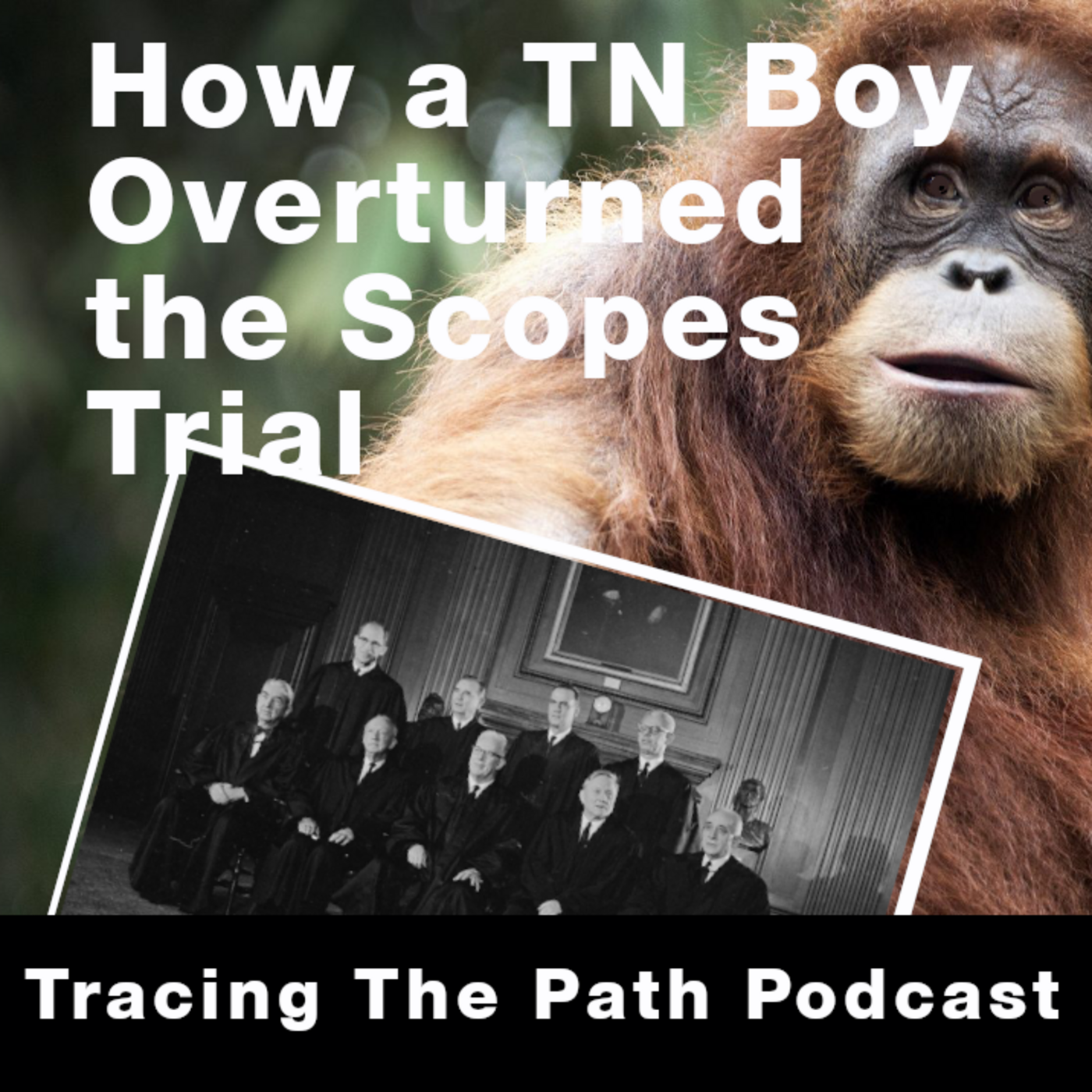 |
How a Tennessee Student Overturned the Scopes Trial Verdict Can you believe the 1925 Scopes Trial was undermined by a Tennessee high school senior? |
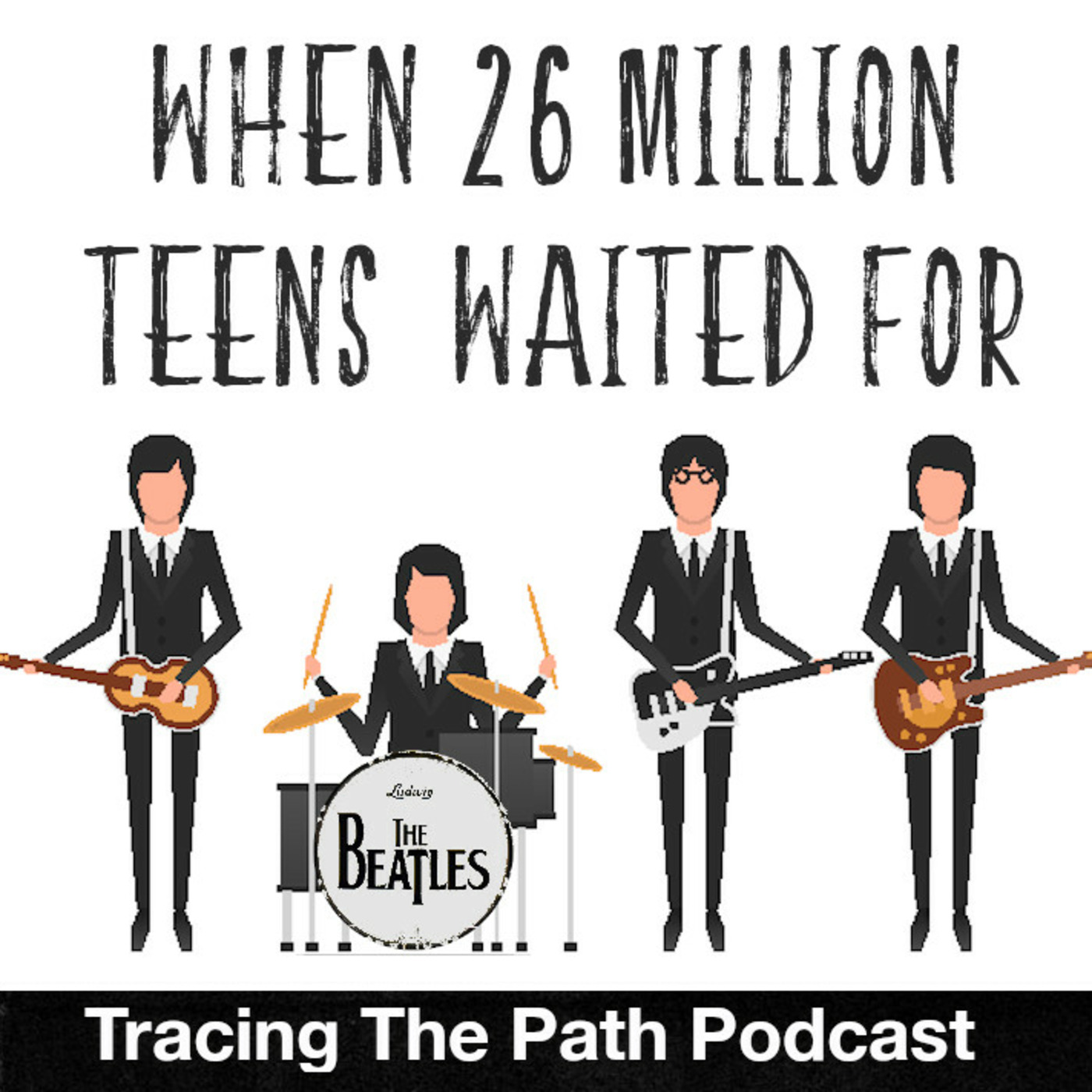 |
When 26 Million Teens Waited for the Beatles The phenomenon that occurred when the Beatles were live on the Ed Sullivan show could have been predicted. . . |
 |
James Bond Ghost Armies Ungentlemanly Warfare Ian Fleming was much more than the author of James Bond. |
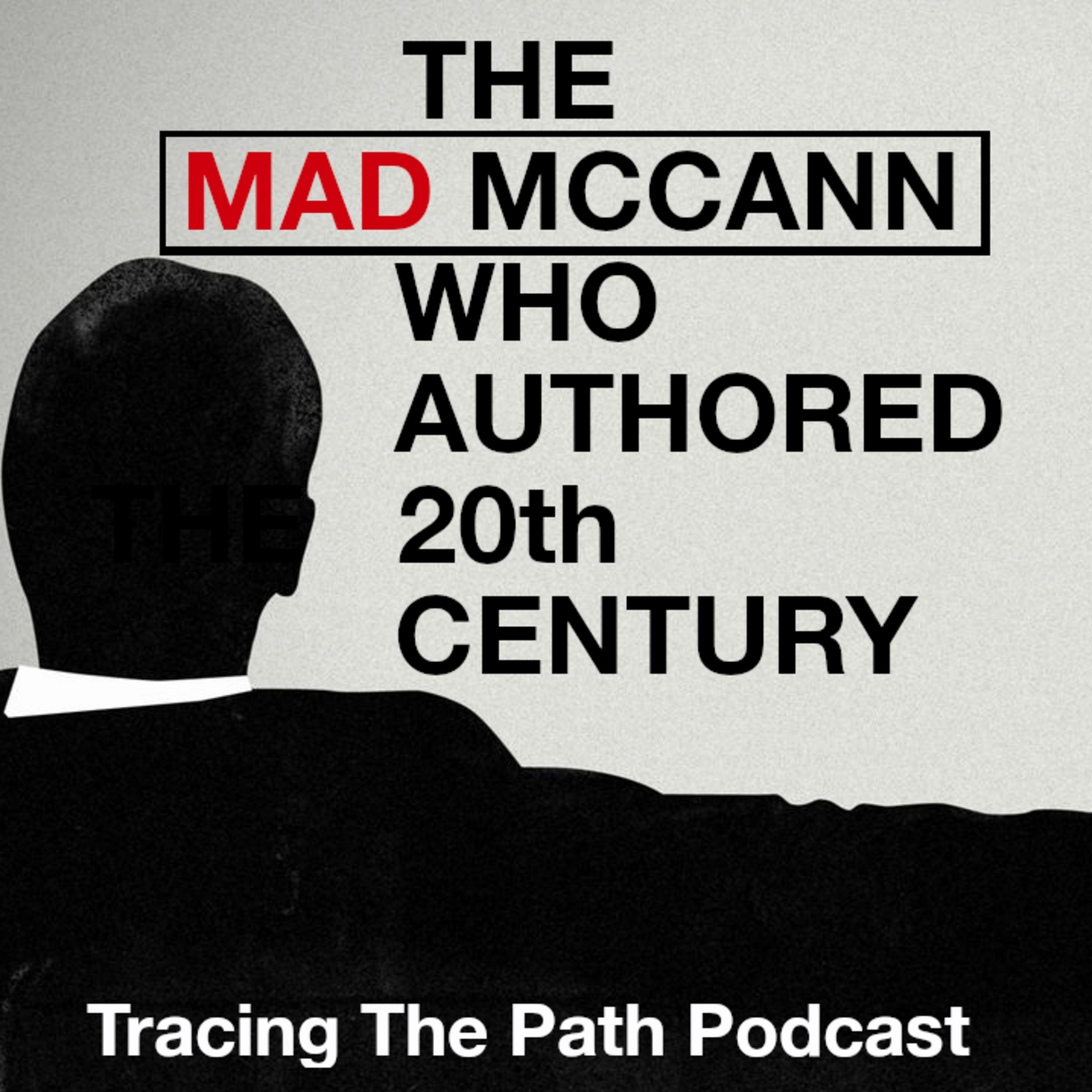 |
The History and Impact of McCann Erickson You’ll be amazed at how many things in our world come back to McCann. |
 |
1848 The Year Halloween Began Have you ever heard the origin of Halloween? |
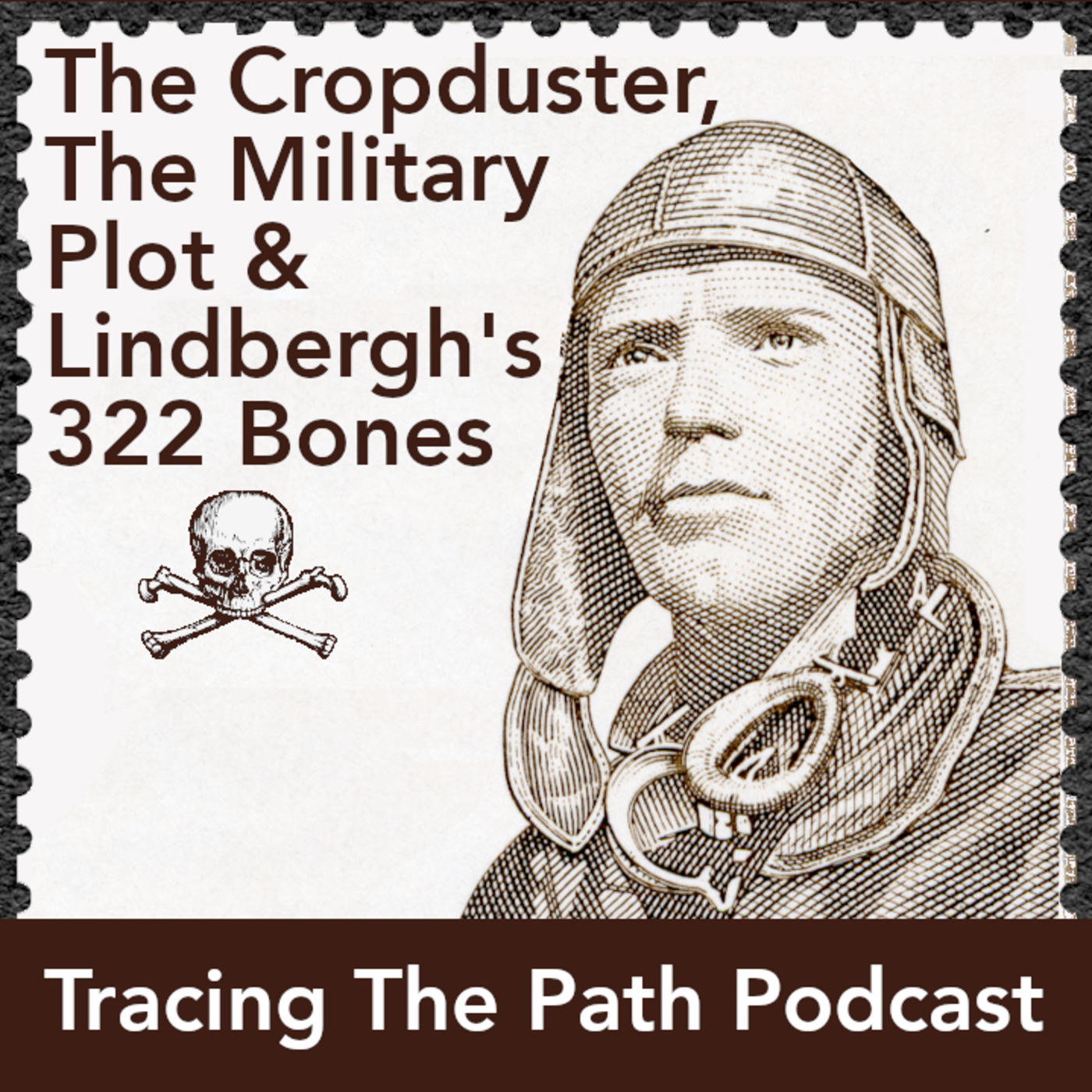 |
The Cropduster, The Military Plot and Lindbergh’s 322 bones The world of Lindbergh is wrapped up into so many things. |
 |
How the Oregon Trail Game Made Apple Famous Was it the Apple IIc that made Oregon Trail famous? Or the other way around? |
SEE THE BIBLIOGRAPHY
SUBSCRIBE AND LISTEN (FOR FREE!)
RATINGS & REVIEWS
If you enjoy this podcast, please give it a rating and review.Positive ratings and reviews help bring Tracing The Path to the attention of other history lovers who may not be aware of our show.



